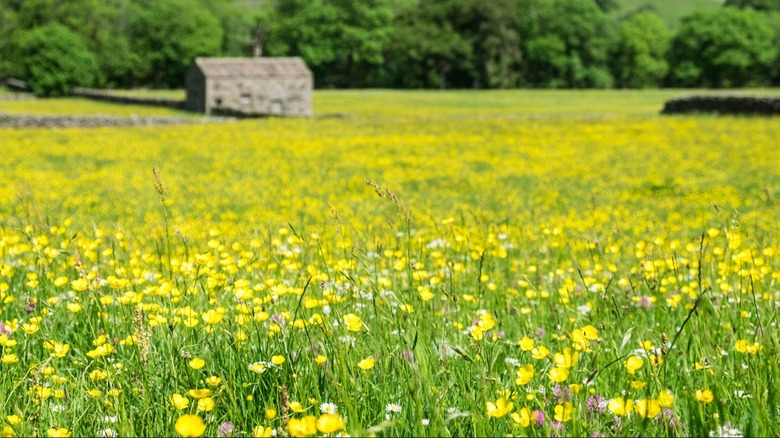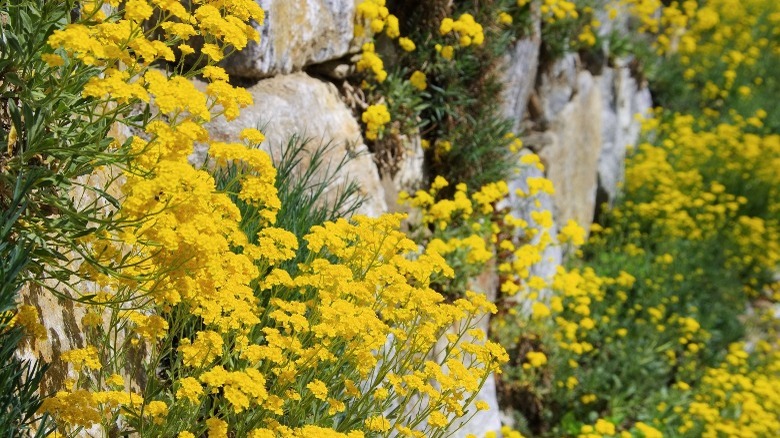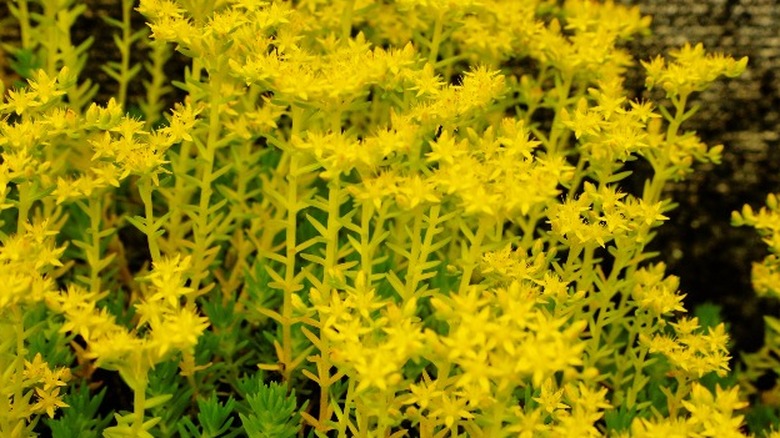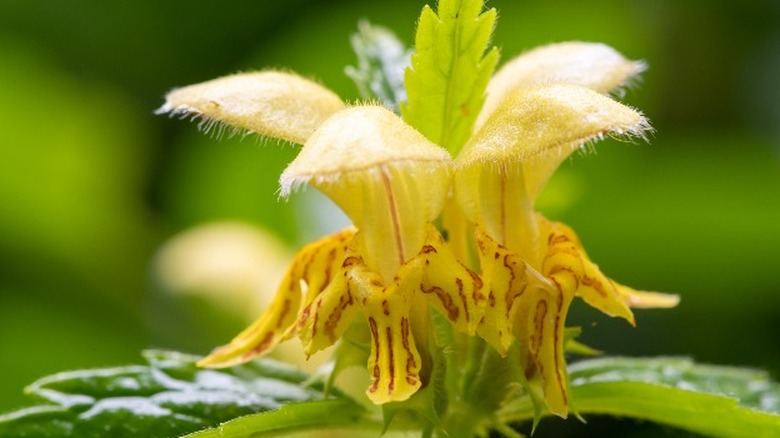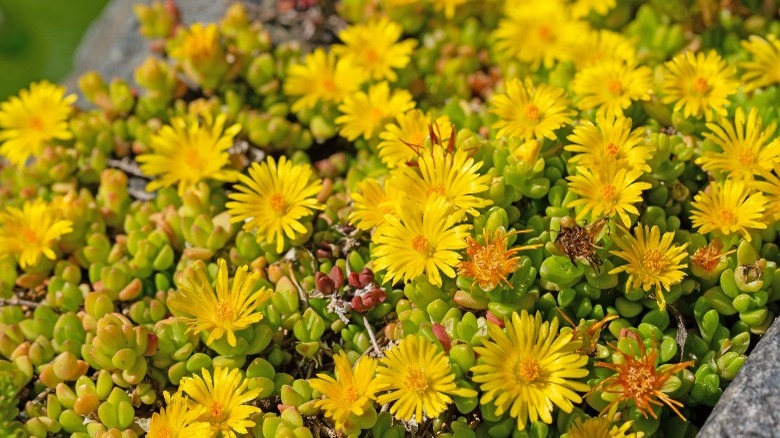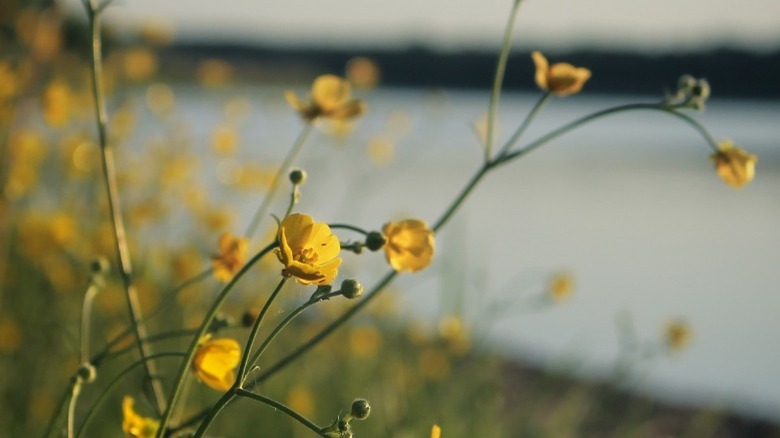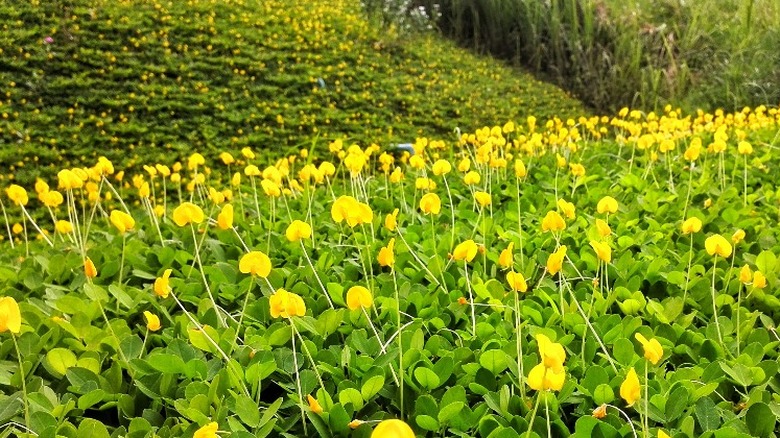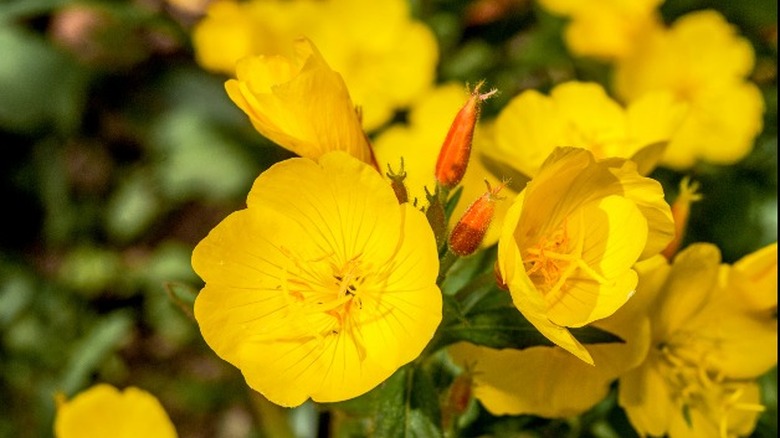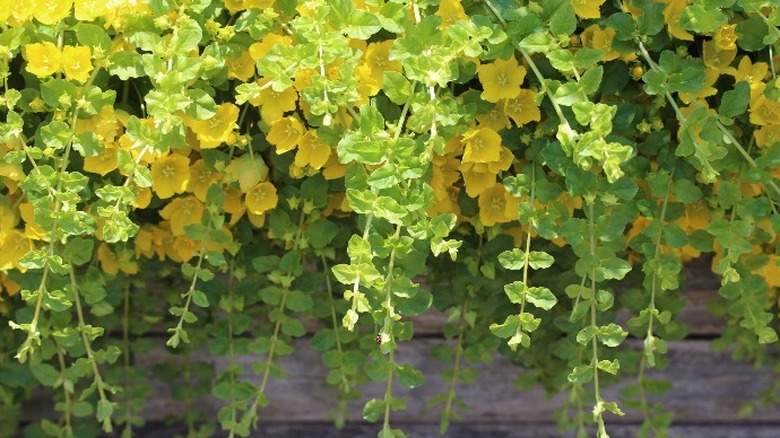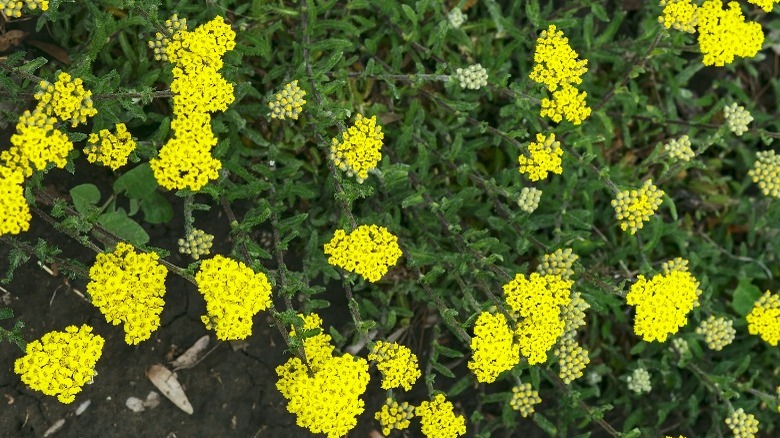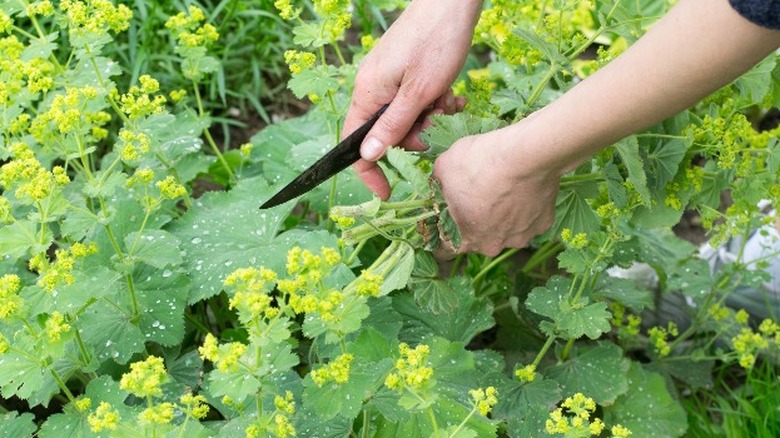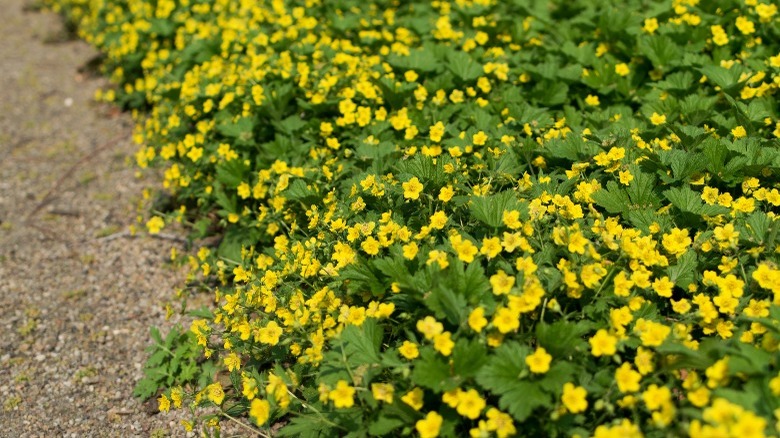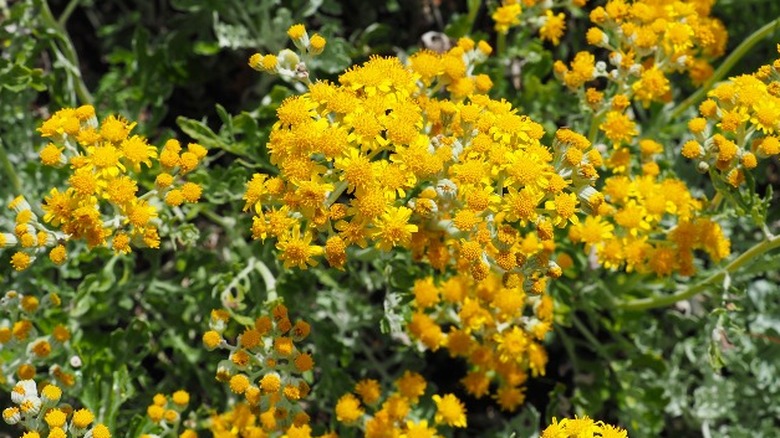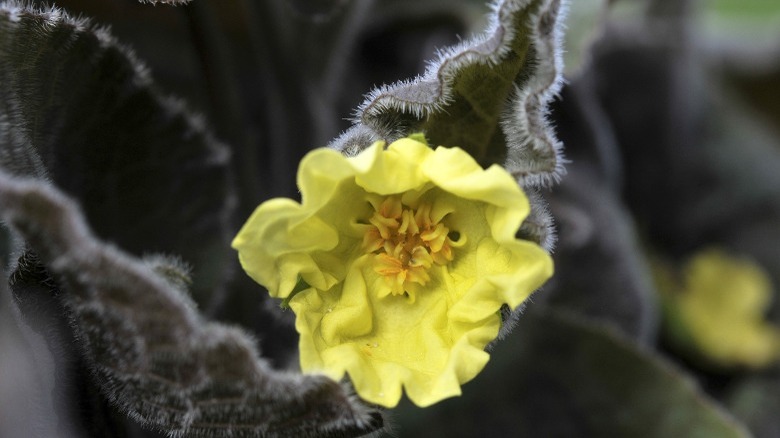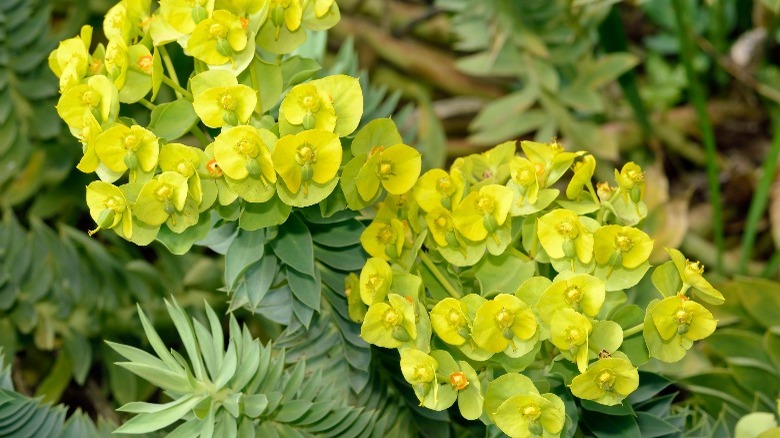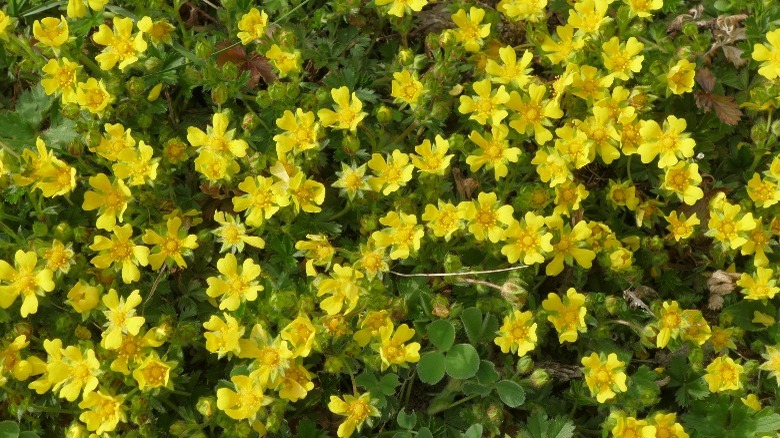15 Types Of Yellow Flowering Ground Covers That Are Good For Your Garden
Ground cover plants typically describe low-growing perennials that spread to some degree beyond where they're initially planted, per the University of Florida. Additionally, ground cover plants are generally easy to maintain and grow. In fact, sometimes they can be too easy to grow — certain species can spread invasively if not regularly and responsibly tended to.
Ground cover plants come in a wide variety of shapes and sizes with individualized needs, but this guide breaks it all down so even a novice gardener can confidently pick the right plant. In addition to producing gorgeous yellow blooms, these specific plants can address pest problems, suppress weeds, and even help protect areas sensitive to soil erosion. Whether you're dealing with stubborn shady areas, seeking to add color, or figuring out what to plant in poor, rocky soil, these highly-versatile ground covers could be exactly what you need. Keep reading to learn more and find the yellow flowering plant that's perfect for you!
1. Yellow alyssum
Easy to grow yellow alyssum (Aurinia saxatilis) requires very little maintenance, making it a popular garden plant and a great option for beginners. It starts blooming in April, and soon bursts with yellow flowers that almost entirely cover the sage colored foliage, per The Spruce. Its medium shape and size is highly versatile, suitable along a retaining wall where it can drape down or as a border plant.
Bloom Season: late spring to early summer
USDA Growing Zone: 3 to 7
Growing Conditions: full sun
Soil Type: dry, well-draining
Size: 6 to 12 inches tall, 12 to 18 inches wide
2. Angelina stonecrop
Angelina stonecrop (Sedum rupestre "Angelina") is a sprawling, fast-growing succulent that does well even in rocky, infertile soil. It flowers into tall blooms that match the spiky yellow foliage, which turns copper colored in the winter, according to Perennials.com. Once settled into it's habitat, it requires very little care other than the occasional watering. Plant angelina stonecrop in your garden for a low-effort, high-impact monochromatic effect.
Bloom Season: early to late summer
USDA Growing Zone: 3 to 9
Growing Conditions: full sun
Soil Type: well-draining, dry, poor
Size: 3 to 6 inches tall, 1 to 2 foot spread
3. Yellow Archangel
With intricate flowers that sit regally atop their stalks and silver-variegated leaves, Yellow Archangel (Lamiastrum galeobdolon) has a distinct look. Like the related mint plant, it spreads easily and can quickly overtake available space. In some areas, it is considered invasive and can threaten native plants if not kept in check, per The Spruce. Still, it can be appropriate for gardens if homeowners are aware of the surrounding environment and avoid accidental spread.
Bloom Season: late spring
USDA Growing Zone: 4 to 9
Growing Conditions: part to full shade
Soil Type: medium-moisture, well-draining
Size: 1 to 2 feet tall and wide
4. Hardy yellow ice plant
Hardy yellow ice plant (Delosperma nubigenum) is a low-growing perennial succulent with bright yellow flowers. Though the plant is considered evergreen, the label can be a bit confusing. According to High Country Gardens, the leaves transform from green to a vivid crimson once winter hits. It is a drought-resistant plant that thrives in cold, dry climates — overall an excellent choice for ground cover in alpine and high-desert regions.
Bloom Season: late spring to early summer
USDA Growing Zone: 4 to 9
Growing Conditions: full sun
Soil Type: sandy, dry
Size: 2 to 24 inches tall, 24 inches wide
5. Creeping buttercup
Creeping buttercup (Ranunculus repens) is a wide-ranging wildflower, having spread across most of the North America. In some places it's considered invasive, largely due to it's impressive adaptability. Creeping buttercup thrives in moist soil, and will quickly overtake the dark, damp environments it most prefers, Missouri Botanical Garden explains. Plant it at the edge of a pond or wetland and you'll soon see for yourself!
Bloom Season: spring to late summer
USDA Growing Zone: 4 to 9
Growing Conditions: full sun to shade
Soil Type: rich, wet
Size: 8 to 12 inches tall, up to 36 inch spread
6. Perennial peanut
Sadly, the perennial peanut (Arachis glabrata) does not produce nuts, though the flowers are edible and have a similar flavor. It's instead used as hay and introduced to pastures for grazing farm animals that benefit from its rich nutrients, according to Gardening Know How. In residential settings, it's commonly used as a lawn-alternative, perfect for low-traffic areas that could use some color. Remember to water frequently, and soon you'll have a unique and healthy lawn.
Bloom Season: Summer
USDA Growing Zone: 8 to 11
Growing Conditions: Full sun
Soil Type: Well-drained, sandy
Size: 3 to 6 inches tall
7. Evening primrose
As its name implies, evening primrose (Oenothera biennis) is nocturnal, opening its blooms as the sun recedes. It is entirely non-toxic, and some enjoy foraging its edible leaves and roots. According to Gardener's Path, this mystical plant is also believed to have medical properties that can address a wide variety of ailments. With such unique characteristics, evening primrose is perfect for gardeners planning a moonlit garden, or hoping to attract nocturnal wildlife.
Bloom Season: late spring to summer
USDA Growing Zone: 3 to 9
Growing Conditions: full sun
Soil Type: well-draining, alkaline
Size: 6 to 24 inches tall
8. Creeping jenny
Creeping jenny (Lysimachia nummularia) looks far lovelier than it sounds. The crawling plant spread quickly, but with regular maintenance can be kept under control. Gardeners can customize the appearance of the plant by choosing where it's grown. Gardenia explains that full sun exposure will give the leaves a golden hue, whereas shade-grown plants will have green leaves that better contrast with the short-lived yellow blooms.
Bloom Season: summer
USDA Growing Zone: 3 to 9
Growing Conditions: full sun to part shade
Soil Type: moist, clay, loamy
Size: 3 to 6 inches tall, 1 to 2 foot spread
9. Wooly yarrow
Archillea tomentosa is a dwarf species of plant in the genus colloquially referred to as yarrow. Unlike Common yarrow, Wooly yarrow grows low to the ground, its dark evergreen leaves spreading further than they grow tall. According to Perennials.com, Wooly yarrow prefers sandy soil and is drought-resistant, but cannot withstand excessive heat and humidity. This makes it well-suited for dry areas, such as a rock garden or along a gravel path.
Bloom Season: late-spring to mid-summer
USDA Growing Zone: 3 to 7
Growing Conditions: Full sun
Soil Type: Sandy
Size: 6 to 8 inches tall, 8 to 18 inches wide
10. Lady's Mantle
Lady's Mantle (Alchemilla mollis) is a traditional garden perennial that remains popular today. Its clouds of tiny yellow flowers evoke a romantic feeling in any outdoor space. According to Johnson's Garden, it grows in neat mounds of scalloped leaves, making it an excellent choice for a garden border. This versatile plant can add beauty to an outdoor path, as cut flowers indoors, or by attracting local butterflies.
Bloom Season: early summer to fall
USDA Growing Zone: 3 to 7
Growing Conditions: full sun to part shade
Soil Type: slightly acidic, moist
Size: 1 to 2 feet tall and wide
11. Barren strawberry
Barren strawberry, or Waldsteinia fragarioides, is named for its resemblance to the better known plant that grows delicious sweet strawberries. Though it also produces fruit after flowering, the small white berries are inedible. According to New Moon Nursery, even deer find them unappealing, which is good news for gardeners hoping to avoid interference from local wildlife.
Bloom Season: early to late spring
USDA Growing Zone: 4 to 7
Growing Conditions: full sun to part sun
Soil Type: slightly acidic, well-draining
Size: 3 to 6 inches tall, 12 inch spread
12. Partridge feather
Partridge feather (Tanecetum densum) is an evergreen perennial related to but distinct from the better-known common tansy. The silver-blue leaves are its namesake, and contrast with the small golden blooms to create a striking composition. Despite minimal water needs and ease of care, partridge feather isn't widely planted, per Plant Select. It's a strong contender for any homeowner wanting an uncommon plant that will stand out from the rest.
Bloom Season: early summer
USDA Growing Zone: 4 to 9
Growing Conditions: full sun to part shade
Soil Type: very dry
Size: 3 to 5 inches tall, 15 to 24 inches wide
13. Upright wild ginger
Upright wild ginger (Saruma henryi) came to the U.S. from its native habitat in China, notes Fine Gardening. The perennial forms small mounds of velvety, heart shaped leaves that emerge in silvery-purple before deepening to green. Compared to other ground cover plants, upright wild ginger spreads more slowly. Use it to fill in spots in your shade garden, without having to worry about it overtaking the entire area.
Bloom Season: mid spring to early summer
USDA Growing Zone: 4 to 8
Growing Conditions: part to full shade
Soil Type: well-draining
Size: 1 to 2 feet tall and wide
14. Gophers spurge
Gopher spurge (Euphorbia rigida) is a shrubby, evergreen succulent named for its ability to repel rodents, deer, and other pests. Plant Care Today advises that it contains a whitish sap that can unfortunately cause skin irritation in humans who forget to wear their gardening gloves. Gardeners who take care to protect themselves can enjoy the plant's geometric leaves and yellow-green blooms and create an create a elegant, cultivated garden scape.
Bloom Season: mid spring to early summer
USDA Growing Zone: 7 to 10
Growing Conditions: full sun
Soil Type: well-draining
Size: 1 to 2 feet tall and wide
15. Spring cinquefoil
Spring cinquefoil (Potentilla neumanianna) is a petite plant with small pointed leaves and dainty, five-petaled flowers that bloom early in the spring. According to Missouri Botanical Garden, it grows at a medium rate but can be easily managed with regular pruning or by dividing the plant into smaller sections. Add it to your garden to bring out color and contrast along a path or between flagstone.
Bloom Season: early to late spring
USDA Growing Zone: 4 to 8
Growing Conditions: full sun to part sun
Soil Type: sandy, well-draining
Size: 3 to 6 inches tall, 12 inch spread
